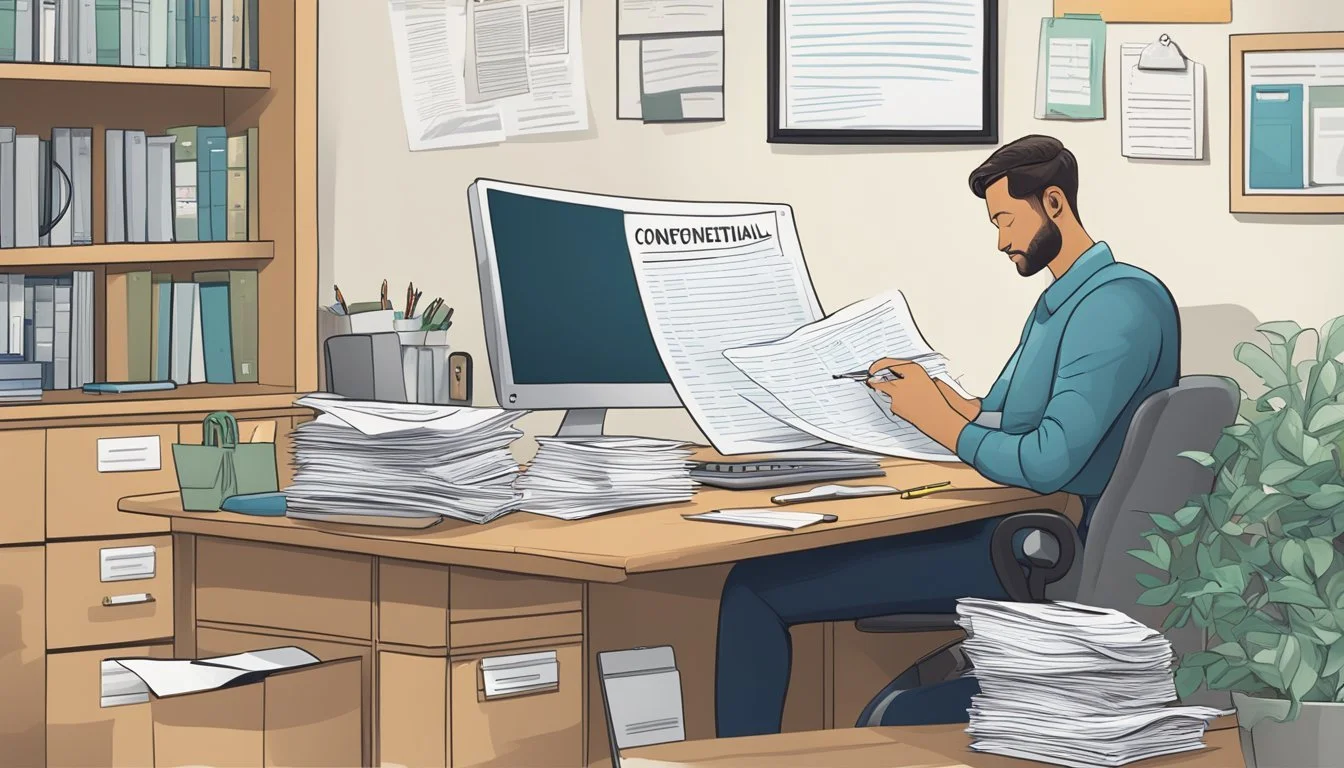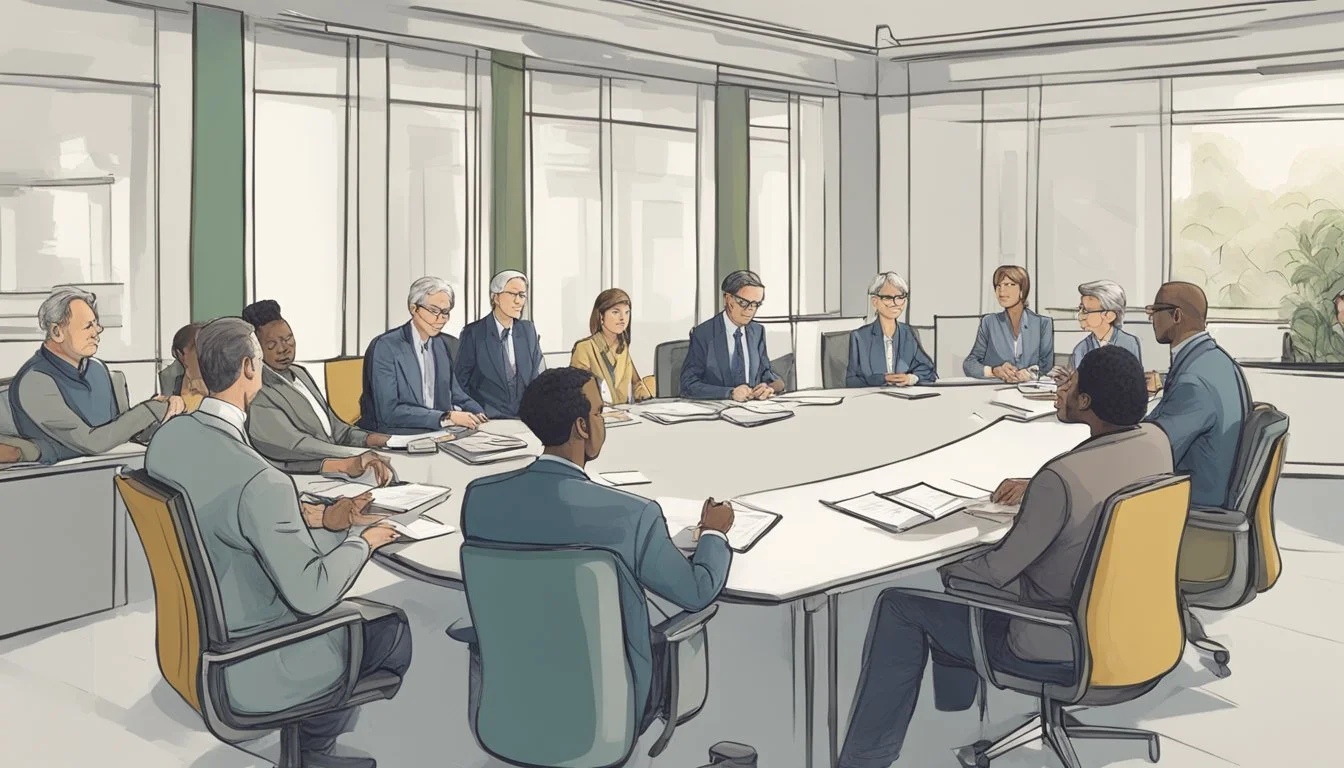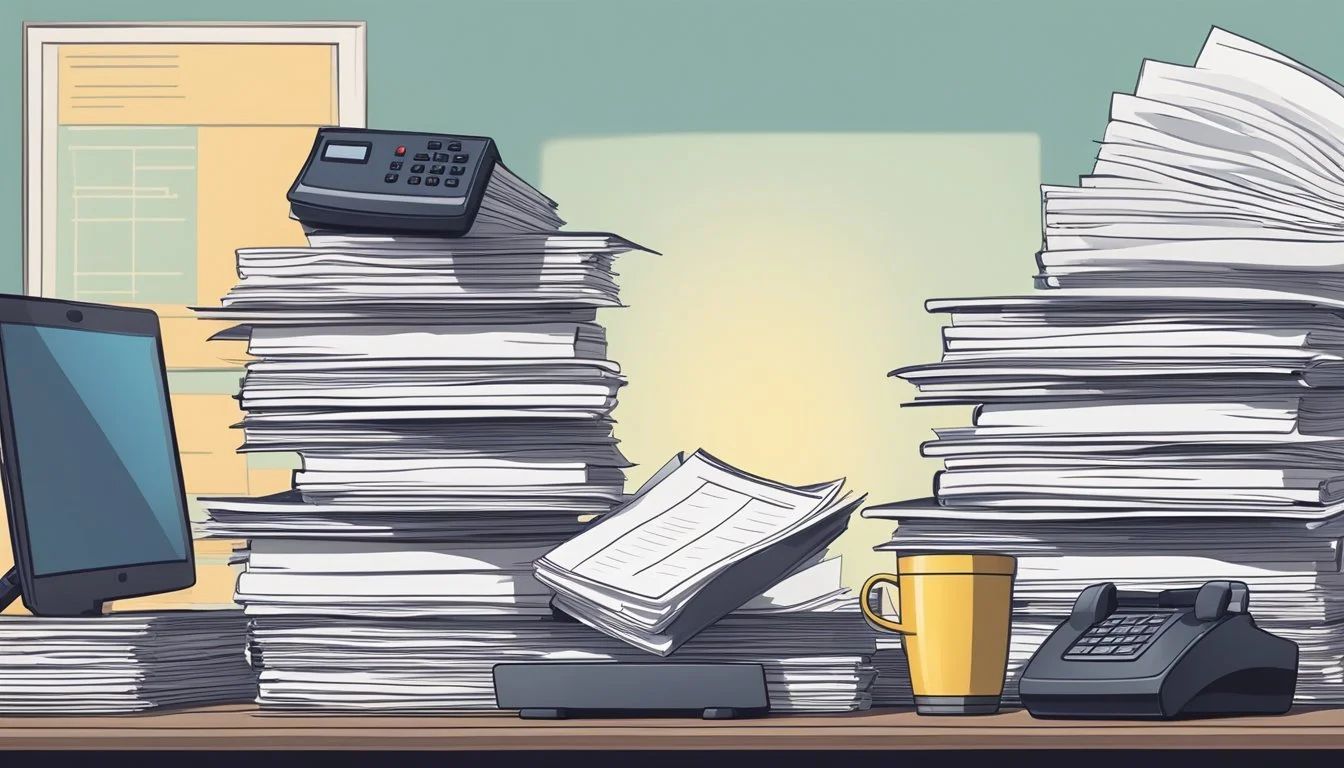9 Ways to Protect Your Creative Ideas from a Narcissistic Investor or Sponsor
Essential Strategies for Innovators
Navigating partnerships with investors or sponsors can be a challenging task, especially when dealing with narcissistic individuals. These people often seek to dominate and manipulate, presenting a threat to your creative ideas and hard work.
Protecting your creative vision is essential to maintaining control and ensuring that your contributions are recognized. By understanding the tactics used by narcissists, you can develop strategies to safeguard your ideas and foster productive, respectful collaborations.
1) Document Everything Clearly
Keeping thorough and accurate records is critical when protecting your creative ideas from a narcissistic investor or sponsor. This practice not only establishes a clear timeline of your work but also serves as concrete evidence of your original contributions.
Use a variety of documentation methods, such as written contracts, emails, and meeting notes. Every agreement or decision should be captured in writing to avoid any misinterpretation or manipulation.
Employ digital tools to ensure all your records are easily accessible and securely stored. Cloud services and encrypted storage can provide additional layers of security for your sensitive information.
By maintaining detailed documentation, you create a transparent and accountable record that can help protect your interests and support your claims in any potential disputes.
2) Use NDAs and Confidentiality Agreements
Non-Disclosure Agreements (NDAs) and confidentiality agreements are crucial tools for protecting creative ideas. They are legal contracts that require parties to keep shared information private and confidential. When dealing with a narcissistic investor or sponsor, these agreements can safeguard your intellectual property.
An NDA outlines what information is considered confidential and the obligations of the parties involved to maintain secrecy. This can include ideas, designs, business strategies, and any other proprietary information.
It's essential to clearly identify the parties involved and specify the confidential information explicitly. This helps ensure there is no ambiguity, protecting your interests. Including specific clauses regarding the duration and scope of confidentiality can provide additional security.
For creative professionals, NDAs are particularly useful in settings like art, design, or media projects. They help prevent the disclosure or misuse of valuable creations and concepts before they are publicly released or fully developed.
Businesses and creators should use NDAs during negotiations, partnerships, or employment agreements to maintain control over their innovative work. By formally documenting the need for confidentiality, you can mitigate the risks posed by potentially untrustworthy parties.
Implementing well-structured confidentiality agreements serves as a legal deterrent against leaks and unauthorized disclosures, providing peace of mind when sharing sensitive information.
3) Set Clear Terms in Contract
Setting clear terms in your contract is crucial to protect your creative ideas from a narcissistic investor or sponsor. Ensure the contract specifies the scope of work. This includes detailed descriptions of deliverables, timelines, and responsibilities.
Incorporate a non-disclosure agreement (NDA) to safeguard confidential information. This legally binds the other party from sharing or using your ideas without permission. Emphasize the importance of confidentiality throughout the duration of the project.
Include clauses that define ownership of intellectual property (IP). Clearly state that you retain ownership of your creative ideas and works, even if they are developed during the collaboration. This avoids any unintended transfer of rights.
Specify payment terms and conditions. Detail the payment schedule, amounts, and any contingencies for non-payment or delayed payment. This helps prevent financial disputes and ensures that both parties understand their financial obligations.
Outline provisions for dispute resolution. Define the process for handling disagreements, such as mediation or arbitration. This can help resolve conflicts without resorting to litigation, saving time and resources.
Engaging a lawyer to create a bespoke contract can provide additional assurance. A legal expert can tailor the contract to your specific needs, ensuring comprehensive protection.
4) Choose Investors Wisely
Selecting the right investor is crucial to ensuring your idea remains safe. Investors can significantly influence the direction and success of your business. It is vital to look beyond just the financial support they offer.
Perform thorough due diligence on potential investors. Research their backgrounds, previous investments, and reputations. Seek out reviews from other entrepreneurs who have worked with them.
A compatible investor shares your vision and values. This alignment makes it less likely they will try to take over or push your idea in a direction you don't support.
Look for investors who bring more than money to the table. They should offer strategic advice, industry connections, and experience that can help your business grow.
Consider setting up a formal, legal framework that outlines the boundaries and expectations for the investor relationship. This can include confidentiality agreements and clear guidelines on decision-making processes.
By carefully selecting your investors, you can safeguard your creative ideas and build a strong foundation for your business. Avoid rushing into agreements without fully understanding the implications for your intellectual property and business control.
5) Consult a Legal Professional
Consulting a legal professional can provide essential guidance when protecting creative ideas from a narcissistic investor. Legal experts understand the intricacies of intellectual property law and can help navigate potential issues.
A lawyer can assist in drafting contracts that clearly outline ownership rights and usage terms. This prevents the narcissistic party from claiming undue credit or control.
Documentation is crucial. Legal professionals can help organize evidence of your original ideas and contributions. This can be vital in disputes, ensuring that your creative work remains protected.
It’s also important to understand the tactics often used by narcissists in legal settings. A legal professional can prepare you to maintain composure and effectively counter manipulative strategies.
Having reliable legal counsel can empower you to enforce your rights confidently. They can intervene if the investor tries to overstep boundaries, providing a safeguard for your creative efforts.
6) Protect Your Intellectual Property
To protect your creative ideas, securing your intellectual property (IP) is crucial. IP includes patents, trademarks, copyrights, and trade secrets. Each type offers different protections based on the nature of your creation.
Registering your IP with the government is a fundamental step. This ensures you have legal documentation of your ownership. For instance, patents protect inventions, while trademarks protect brand names and logos.
Using nondisclosure agreements (NDAs) with anyone who has access to your ideas is vital. NDAs legally bind parties to confidentiality, preventing them from disclosing or using your proprietary information without permission.
Keeping detailed records of your work is essential. Document every stage of development, including dates and descriptions. This can serve as evidence in case of disputes or infringements.
Digital rights management (DRM) tools help protect online content. DRM can prevent unauthorized distribution and access to your digital work, whether it's software, music, or written material.
Consider employing digital watermarking for visual content, which embeds information about ownership directly into the image or video. This technique can deter misuse and trace unauthorized copies.
For more comprehensive advice on protecting IP, visit Forbes' guide on intellectual property protection.
7) Maintain Control of Key Decisions
To safeguard your creative ideas, it is crucial to retain decision-making authority. This ensures that your vision doesn't get distorted or hijacked.
Set boundaries early. Define clear-cut roles and responsibilities. This helps eliminate any ambiguity regarding who has the final say on critical matters.
Regularly communicate your intentions and goals. This keeps everyone aligned and reduces the chances of conflict or manipulation.
When dealing with a narcissistic investor, avoid giving them unfettered access to sensitive information. Keep critical aspects of your project confidential.
Narcissistic individuals often use tactics to dominate and confuse. They may play on emotions or employ thought-control tactics to sway decisions. By maintaining control, you diminish their influence over your project.
Protect your intellectual property through legal means. Utilize patents, trademarks, or copyrights to ensure your ideas remain yours.
Being assertive and confident in your decision-making capabilities can prevent a narcissistic investor from undermining your authority. Stand firm in your choices and communicate your decisions clearly.
By prioritizing control over key decisions, you shield your creative venture from unnecessary influence, ensuring the integrity of your work. This proactive approach fosters a healthy working relationship and preserves the original vision of your project.
8) Use Secure Communication Channels
Using secure communication channels is crucial when dealing with sensitive information. Encrypting emails and using secure messaging apps can significantly reduce the risk of data breaches. Tools like Signal, Telegram, and encrypted email services offer robust security features to keep your communications safe.
Secure communication channels are essential for both internal and external interactions. Internally, they help ensure that team discussions about innovative ideas remain confidential. Externally, they protect exchanges with investors or sponsors, preventing unauthorized access.
Virtual private networks (VPNs) also add an extra layer of security. By encrypting internet traffic, VPNs help safeguard data from being intercepted by unauthorized parties. Additionally, using secure Wi-Fi connections can further protect your communications.
Regularly updating communication software is another important step. Updates often include security patches that address known vulnerabilities. Ensuring all team members use the latest versions of communication tools is a simple yet effective measure.
For those handling particularly sensitive information, it might be necessary to invest in enterprise-level security solutions. These solutions offer advanced features like end-to-end encryption, multi-factor authentication, and more. It's worth exploring these options for maximum security.
Overall, maintaining secure communication is a foundational aspect of protecting your creative ideas. Employing these methods can help protect intellectual property from risks associated with data breaches and unauthorized access.
9) Train Your Team on Privacy Protocols
Implementing rigorous privacy protocols is essential. A well-informed team will help safeguard your creative ideas from any potential leaks or misuse.
Proper training equips team members to handle sensitive information appropriately. They become adept at recognizing phishing attempts and other security threats, reducing the likelihood of accidental data exposure.
Use a comprehensive training program, covering everything from basic cybersecurity practices to specific procedures for protecting intellectual property. Regularly update this training to keep pace with new threats and technologies.
Privacy training can minimize the risks associated with data breaches. Well-trained employees are better equipped to identify vulnerabilities and take corrective measures promptly. This level of vigilance is crucial for maintaining the confidentiality of your creative ideas.
For organizations dealing with frequent new hires, a brief but effective privacy training program is beneficial. This ensures new employees understand the importance of safeguarding proprietary information from the outset.
Using technology wisely can further enhance privacy protocols. Secure networks, strong passwords, and encryption should be standard practices for anyone handling sensitive data.
By prioritizing privacy training, your team will be better prepared to protect your creative ideas from potential threats, including those posed by narcissistic investors or sponsors. Investing in privacy training fosters a culture of security and trust within your organization. For a deeper understanding of training benefits, read more on GDPR Training.
Understanding Creative Ownership
Creative ownership is vital for protecting ideas from misuse or unauthorized replication. Two primary facets of creative ownership are intellectual property rights and legal protections for creators.
Intellectual Property Rights
Intellectual property (IP) rights are a critical means of safeguarding creative works. These rights grant creators exclusive control over the use and distribution of their innovations. Types of IP rights include copyrights, patents, trademarks, and trade secrets.
Copyrights protect original works of authorship such as literature, music, and art. Patents cover inventions and processes, while trademarks secure brand names and logos. Trade secrets protect confidential business information. Respecting IP rights ensures that creators maintain control and receive recognition for their work.
Timely registration of IP is essential to enforce these rights. Creators should consult with legal experts to navigate the complexities of IP law and ensure their creations are adequately protected.
Legal Protections for Creators
Legal protections for creators extend beyond IP rights and include various contracts and agreements. Non-disclosure agreements (NDAs) are commonly used to prevent the sharing of sensitive information with unauthorized parties. Work-for-hire agreements clarify ownership when creators are employed by others to produce creative work.
Licensing agreements allow creators to grant usage rights to others while retaining ownership. It's crucial that these agreements carefully outline the scope of use, duration, and financial compensation.
Understanding and utilizing these legal tools helps creators secure their interests and mitigate the risk of exploitation. Consulting with legal professionals can provide tailored advice and ensure that all legal documents are enforceable and aligned with the creator's objectives.
Identifying Narcissistic Investors
Recognizing narcissistic investors can save time and prevent manipulation and potential harm. Key identifiers include particular personality traits and specific red flags in professional engagements.
Traits of Narcissistic Personalities
Narcissistic investors often exhibit grandiosity, a pervasive pattern of behaviors characterized by an inflated sense of importance. They frequently speak about their achievements and expect constant admiration.
Another characteristic is their lack of empathy. They struggle to recognize or respect the feelings and perspectives of others. This trait can make them manipulative, as they prioritize their own needs and goals above all else.
Narcissists are also prone to arrogance and entitlement. They expect special treatment and may react angrily if they do not get it. Recognizing these behavioral patterns can help in identifying narcissistic tendencies early on.
Red Flags in Professional Relationships
In professional settings, narcissistic investors may display several telling behaviors. They often take credit for others' work, exaggerating their contributions to projects to enhance their own image.
A common tactic is gaslighting, where they distort facts and reality, leaving others questioning their perceptions. This can create an unstable and stressful work environment.
They are also known to be pathological liars. Consistently catching them in lies or half-truths can be a clear indication of their nature.
Lastly, narcissistic investors tend to isolate team members. They might undermine relationships by spreading lies or fostering distrust, ensuring they remain central to all decision-making processes. Recognizing these red flags is crucial to maintaining a healthy professional relationship.
Strategies to Safeguard Your Ideas
To protect your creative ideas from potentially exploitative individuals, consider implementing specific strategies. These include utilizing Non-Disclosure Agreements (NDAs) and building a strong support network.
Non-Disclosure Agreements (NDAs)
Non-Disclosure Agreements are legally binding contracts that prevent parties from sharing sensitive information. They are essential tools in maintaining the confidentiality of creative ideas, especially when dealing with investors or sponsors who may exhibit narcissistic tendencies.
When drafting an NDA, it is crucial to clearly define what constitutes confidential information, establish the duration of the confidentiality obligation, and specify the permitted uses of the information.
Ensuring both parties understand and sign the NDA before any significant discussions reduces the risk of idea theft. Always consult with a legal professional to make sure the NDA is comprehensive and enforceable.
Building a Support Network
A robust support network provides essential protection for creative endeavors. Surrounding oneself with trustworthy individuals, such as mentors, fellow creators, and legal advisors, can offer guidance and serve as a buffer against manipulative behaviors.
Engage with industry professionals who can offer insights and advice. This network not only helps validate ideas but also provides emotional support and practical assistance when negotiating with investors or sponsors.
Never underestimate the power of community in safeguarding creative ideas. A well-connected and informed support network enables better decision-making and offers security against potential exploitation. For more detailed information, discover ways to protect your creativity.












